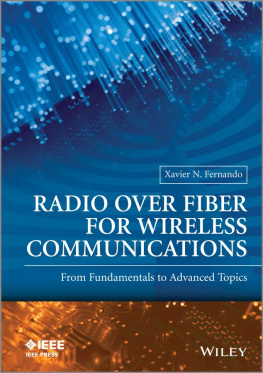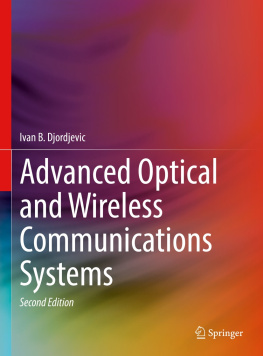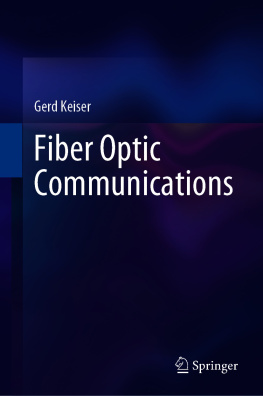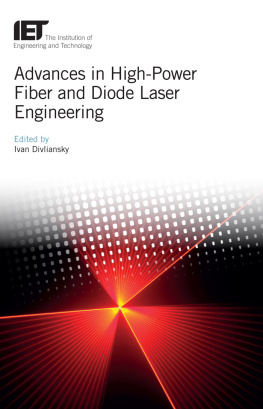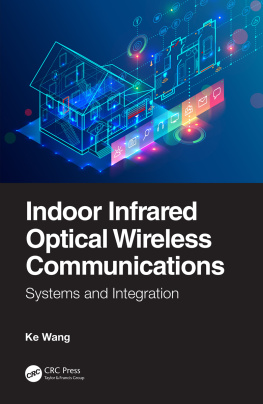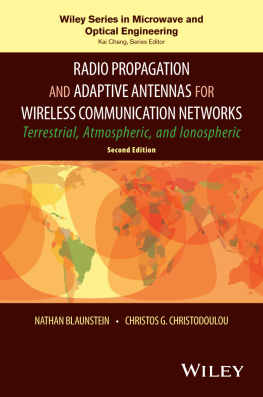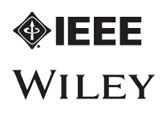Xavier N. Fernando - Radio over Fiber for Wireless Communications: From Fundamentals to Advanced Topics
Here you can read online Xavier N. Fernando - Radio over Fiber for Wireless Communications: From Fundamentals to Advanced Topics full text of the book (entire story) in english for free. Download pdf and epub, get meaning, cover and reviews about this ebook. year: 2014, publisher: Wiley, genre: Science. Description of the work, (preface) as well as reviews are available. Best literature library LitArk.com created for fans of good reading and offers a wide selection of genres:
Romance novel
Science fiction
Adventure
Detective
Science
History
Home and family
Prose
Art
Politics
Computer
Non-fiction
Religion
Business
Children
Humor
Choose a favorite category and find really read worthwhile books. Enjoy immersion in the world of imagination, feel the emotions of the characters or learn something new for yourself, make an fascinating discovery.
- Book:Radio over Fiber for Wireless Communications: From Fundamentals to Advanced Topics
- Author:
- Publisher:Wiley
- Genre:
- Year:2014
- Rating:5 / 5
- Favourites:Add to favourites
- Your mark:
Radio over Fiber for Wireless Communications: From Fundamentals to Advanced Topics: summary, description and annotation
We offer to read an annotation, description, summary or preface (depends on what the author of the book "Radio over Fiber for Wireless Communications: From Fundamentals to Advanced Topics" wrote himself). If you haven't found the necessary information about the book — write in the comments, we will try to find it.
A comprehensive evaluation of Fi-Wi, enabling readers to design links using channel estimation and equalization algorithms
This book provides a detailed study of radio over fiber (ROF) based wireless communication systems, otherwise called fiber wireless (Fi-Wi) systems. This is an emerging hot topic where the abundant bandwidth of optical fiber is directly combined with the flexibility and mobility of wireless networks to provide broadband connectivity. Its application is increasing because of the growing demand for broadband wireless services. In such a system the transmission of the radio signals over a fiber is an important task. This book provides substantial material on the radio over fiber part of the complete fiber-wireless system, including new research results on the compensation methods.
The early chapters provide fundamental knowledge required for a non-expert engineering professional as well as senior/graduate level students to learn this topic from scratch. The latter part of the book covers advanced topics useful for researchers and senior students. Therefore, this book provides a comprehensive understanding of the system for readers who will gain enough knowledge to design Fi-Wi links of their own by learning how to develop Fi-Wi channel estimation and equalization algorithms. This concept is completely novel in current literature and has been patented by the author.
Readers are expected to have a basic understanding of fiber optics and wireless communications to easily follow the book and to appreciate the concepts. Basics of the Fi-Wi system and signal processing approaches are clearly explained. It covers a multidisciplinary topic and acts as a bridge between optical and wireless communication domains. In the increasingly demanding telecommunications profession, engineers are expected to have knowledge in both optical and wireless communications and expected design combined/hybrid systems. Hence, the book is written in such a way that both optical and wireless professionals will be able to easily understand and perceive the concepts.
- follows a logical process from basic principles through to advanced topics, providing a wide range of interest for researchers, practicing engineers, students, and those required to build such networks
- explains detailed system design concepts and the limitations and advantages in each configuration, appealing to design engineers, and largely avoiding system specifics
- demonstrates the authors exclusive patent, showing how to develop baseband signal processing algorithms for Fi-Wi systems, which is a key requirement for the successful deployment of Fi-Wi systems
- contains tables, numerical examples and case studies, facilitating a good quantitative understanding of the topic
Xavier N. Fernando: author's other books
Who wrote Radio over Fiber for Wireless Communications: From Fundamentals to Advanced Topics? Find out the surname, the name of the author of the book and a list of all author's works by series.

